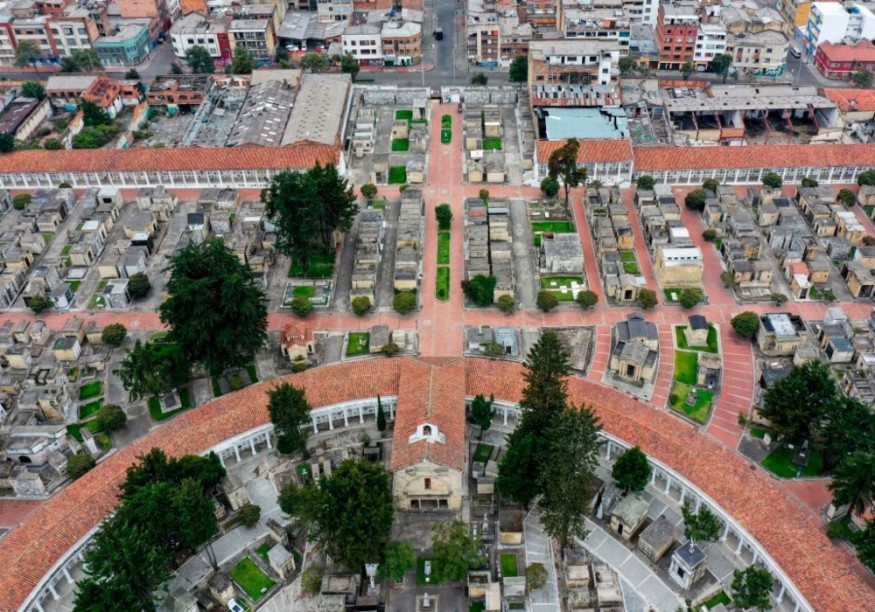Colombia's Most Haunted Places: Visit a Haunted Cemetery or Unravel the Mystery of a Ghost Town

Colombia is a country with beautiful locations and places that also became famous for its terrifying horror tales. Traveling there is an adventure best for the brave ones.
5 Most Haunted Places in Colombia
Here are five famous spots in Colombia with reputations for being truly haunted.
Casa Sámano Museum
On a small, almost unnoticeable street near the southern border of Bogotá's downtown area is where you will find Casa Sámano Museum.
The building once served as the residence of Viceroy of New Granada Juan Sámano, a prominent military commander during Colombia's War of Independence in the 1800s.
According to Great Value Vacations, guards and visitors have reported seeing Samano's ghost dozens of times. His efforts to torment the living are reportedly just as despicable as his behavior while still alive.
Samano's spirit is blamed for the random spitting and the eerie footsteps that can be heard all over the building because he was known to spit on and belittle those below him in life.
READ NEXT : Peru's Most Haunted Places
Gorgona's Jail
The island of Gorgona got its name from the poisonous snakes living on the island, reminiscent of Medusa, the most famous gorgon in Greek mythology, according to Colombia.co.
Gorgona island was once called the "Alcatraz of Latin America," but it now became part of a National Natural Park, attracting hundreds of tourists annually.
From 1960 to 1984, the maximum-security institution on the island, with tiny wooden cabins, punishment cells, and lavatories, housed the most dangerous criminals in the country.
It is said that fleeting shadows and unexplained noises still exist today. Some tourists even reported feeling an unseen force holding them back as they took the ghost tour. Several others reported hearing the screaming of inmate spirits.
Armero
According to some reports, around 30,000 ghosts roam the streets of Armero. The Nevado del Ruiz volcano stands in for Mount Vesuvius, and this doomed town serves as Colombia's Pompeii.
The Nevado del Ruiz volcano erupted on November 13, 1985, after months of warnings that came too late for the government to pay attention to the tiny, unprepared town of Armero.
More than 25,000 people died when lahars or mudslides wiped out the city. Countless travelers have reportedly heard their cries, according to Kuoda.
Hotel del Salto
One of Colombia's haunted places, yet one of the most beautiful and famous places in the country, is Hotel del Salto. It was constructed in 1923 and was dedicated to its architect Carlos Arturo Tapias.
The hotel underwent significant transformations as it transitioned from a private residence to a gathering place before eventually opening as a hotel in the 1950s.
In addition to the building's physical degeneration from pollution in the Bogota River, the business collapsed in the following decades because of the economic downturn. This Colombian location is haunted for sorrowful and peculiar reasons.
The hotel is situated next to Tequendama Falls. Locals would leap off this cliff during the Spanish invasion of Colombia to flee the conquistadors. The dark past continues to torment this cliffside museum even after decades have passed.
Numerous guests would jump to their deaths from the Hotel del Salto's windows while it still took in inhabitants. In one instance, a guest was believed to have been killed at the hotel after attackers had been influenced by the dark energy surrounding the falls.
Central Cemetery of Bogota
One of Colombia's most haunted places is Bogotá's Central Cemetery. It is not the number of lost souls that wander in the area that sets them apart, but the level of terror.
Bogota's Central Cemetery is the city's largest cemetery. That leads one to believe that many ghosts regularly frequent the place. It also serves as the final resting place for many of Colombia's most famous people, including poets, lawmakers, and even presidents.
Even if you do not experience anything paranormal during your visit, the cemetery's intimidating bronze statues, weathered graves, spiral stairway to an underground tomb, and hellish gates will give you the chills.
A sign reading "we await the resurrection of the dead" can be found at the cemetery's entrance.
READ MORE : Colombia's Indigenous Faith
This article is owned by Latin Post.
Written by: Bert Hoover
WATCH: Volcanologists Who Cried Wolf - The Armero Tragedy - From Naked Science
Subscribe to Latin Post!
Sign up for our free newsletter for the Latest coverage!















